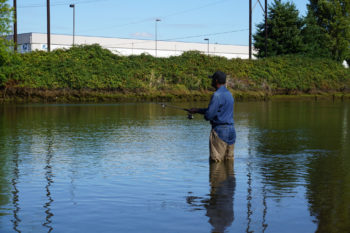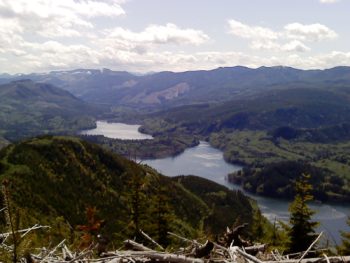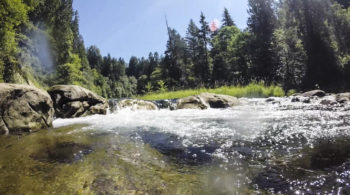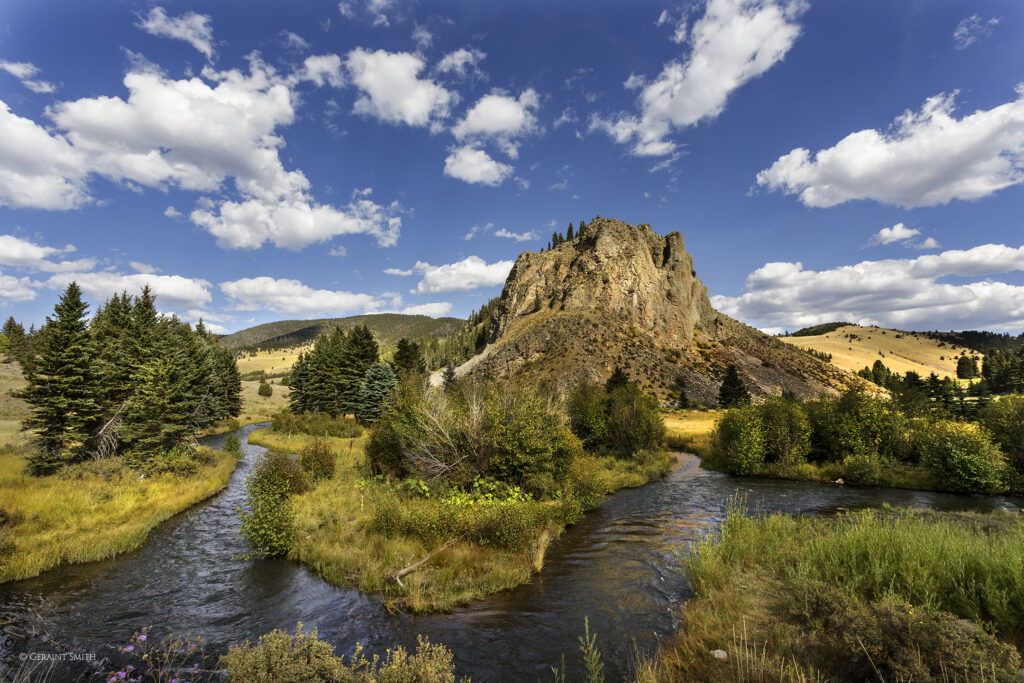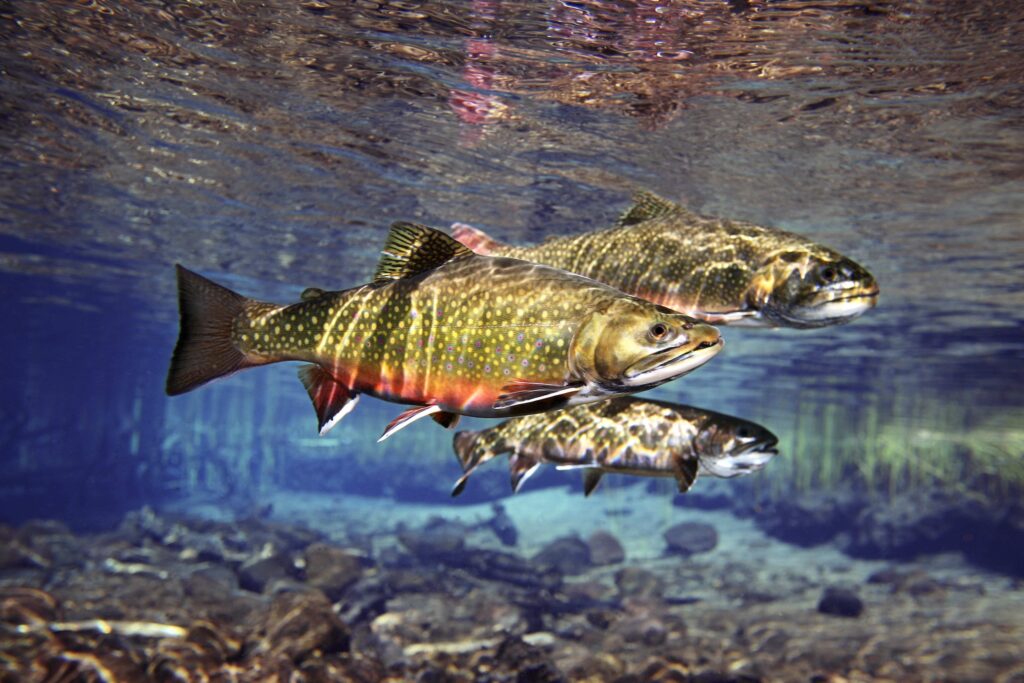How Do You Save a Wild-Urban River?
The Green-Duwamish River faces many threats to sustainable river health and critical salmon populations. Saving the Green-Duwamish will require multiple approaches operating on local, state and federal levels to restore the river.
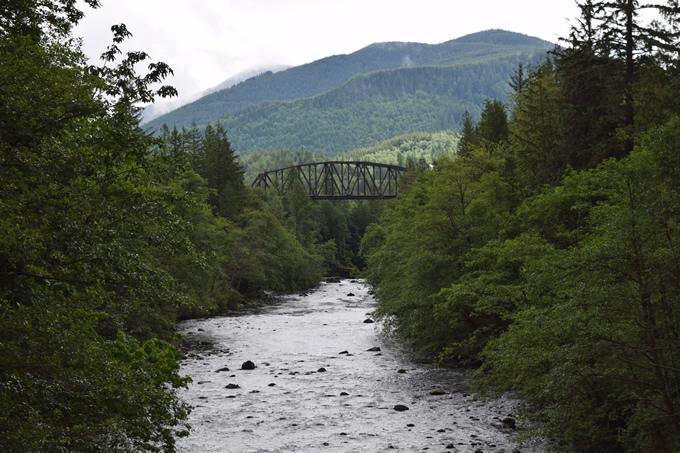
This post by American Rivers’ Lapham Fellow, Jonathon Loos, is a part of our America’s Most Endangered Rivers® series spotlighting the Green-Duwamish River.
The Green-Duwamish River is an interesting study in how the character of a river system can change across a landscape. Originating as snowmelt flowing off the Cascade Mountains, and encompassing some of the United States’ last remaining salmon runs, the wild charisma of the headwaters is palpable. That same river also flows downstream through one of the Northwest’s most populated regions, meeting the Puget Sound amidst the iconic cityscape of Seattle, Washington. The Green-Duwamish is both a wild and an urban river. This duality showcases the Green-Duwamish’s unique character, and the multifaceted pressures it faces.
Focusing on Critical Threats
A system that varies in character, such as the Green-Duwamish, faces a myriad of issues— on one hand there is a need to preserve its wild character, and on the other hand there is a need to improve the sustainability and vitality of a highly impacted system. Each issue presents such compelling challenges; it is difficult to determine a specific point on which to raise the alarm. For example, the lower Green-Duwamish faces dual-pronged water quality impairments, while in the upper Green, fish run into dams as they strive to complete essential migrations to and from the sea.
Fortunately, there are some fiercely dedicated stakeholders working on each of these issues, most of whom have the Green-Duwamish River right in their backyards. If you talk to any one of them, they will tell you how important addressing each of these threats is to restoring the Green-Duwamish. Furthermore, they’ll tell you that fixing any single problem will not stop degradation of the river nor recover its dwindling salmon populations. Instead, many stakeholders acknowledge that efforts to restore the Green-Duwamish’s health and function will only be fully realized when all of these challenges are addressed in unison. This approach will require proactive efforts across the entire watershed, beginning with mindful citizens and supported by local municipalities, state agencies, federal agencies and the U.S. Congress.
Over the course of the next few weeks, American Rivers’ blog will feature the perspectives of individuals with personal ties to the Green-Duwamish, as well as key actors working to restore the river and its native salmon populations. While the threats facing the Green-Duwamish are numerous, the objectives in addressing them are clear: restore water quality and remove barriers within the watershed. Here’s a quick overview of those issues, all of which will be discussed in more detail by on-the-ground experts in the coming weeks:
Toxics and Temperature
The Pacific Northwest is known for its precipitation. In urban areas, rain becomes stormwater runoff, and can wreak havoc on aquatic ecosystems. Urban runoff flushes pollutants that are toxic to fish and wildlife into creeks, streams and rivers. The Green-Duwamish receives high loads of these pollutants, creating toxic water quality conditions that harm native fish. The lower Green-Duwamish also flows through densely developed urban areas with simplified river channels and riverbanks stripped of shade-providing vegetation. Lacking deep pools and without enough shade, waters heat up during summer months, reaching temperatures that are harmful, or even lethal, to salmon migrating upstream.
Obstructed Migration
Fish that make it past harmful toxic and thermal conditions in the lower Green-Duwamish face a different set of hurdles as they move upriver. Two dams, the Tacoma Diversion and Howard Hanson Dam, block upstream passage of migrating adult salmon. Both dams have been equipped with passage facilities to move fish upstream. However, Howard Hanson Dam still lacks the capacity to move juvenile fish back downstream to spend adulthood in the Puget Sound. This is the current scenario in the Upper Green; even when spawning adult salmon survive the journey through polluted and warm waters, and make it over two dams to reach spawning habitat, their offspring cannot make it back downstream.
The National Marine Fisheries Service (NMFS) and the Army Corps of Engineers have been working diligently to finalize a project design for implementing downstream fish-passage at Howard Hanson Dam. However, the costs associated with this project are much higher than the amount that was initially authorized for construction of Howard Hanson Dam by the U.S. Congress. To secure the funds needed to implement downstream passage will require another approval by Congress. We need strong support to make the final push for this to happen.
Making the Case for Restoration
Many people throughout the Green-Duwamish watershed recognize that this system possesses incredible natural, cultural and economic value. Communities and agencies are galvanizing along the banks of the Green-Duwamish to invest in actions that restore the river and sustain its shared resources. Those efforts will never reach their full restorative potential as long as downstream fish passage remains blocked at Howard Hanson Dam. Congressional approval of the plan to implement that passage is vital to moving forward with restoring the Green River, and will signal to local, regional and state governments that healthy, ecologically functioning watersheds are worth investing in and protecting.

